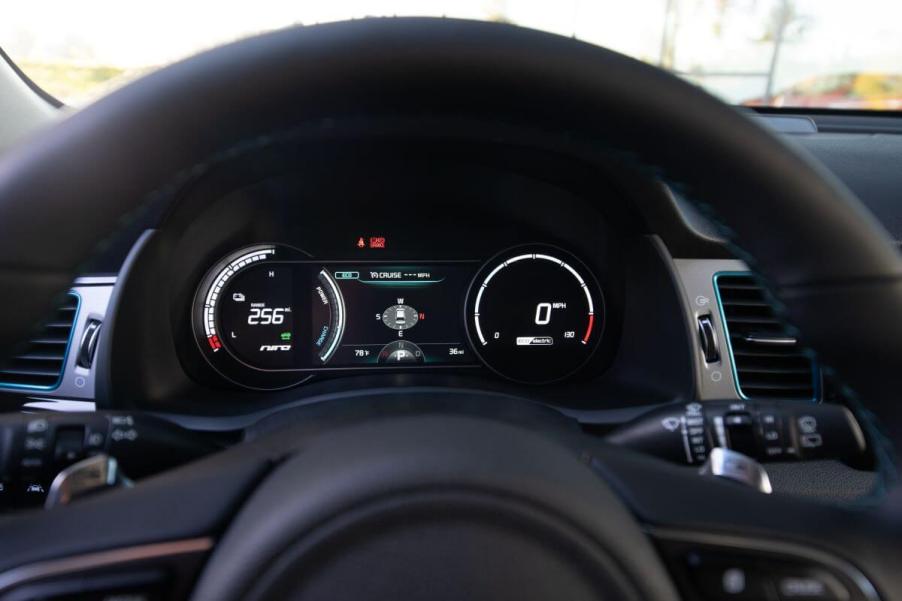
What Do H and L on an Electric Car Dashboard Gauge Mean?
Most drivers know the standard gauges on a gasoline-powered car, and they don’t come any more obvious than the fuel gauge. F = full; E = empty. As in, the gas tank is currently (F)ull of marvelously combustible dinosaur juice, or it is (E)mpty of the same and should be topped up with a quickness.
However, when drivers accustomed to internal combustion slide inside an EV, they’re confronted with a mystery. What the heck do H and L mean on the dashboard of an electric car?
The EV’s equivalent of a fuel gauge
The short answer is that “H” and “L” are the electric vehicle equivalent of the fuel gauge in a gas-powered car, with H for High and L for Low. Where a gas car mechanically measures the fuel level in the tank, some electric vehicles monitor the battery’s total charge on a scale between High and Low, telling the driver when it’s time to recharge.
Things get more complex with other elements of an electric vehicle’s dashboard display. The conversion from measuring gas levels to measuring battery charge is fairly straightforward, but EVs also come with gauges unique to electric propulsion.
Mapping the electric car dashboard
As Electrek reports, several lights, gauges, and other dashboard elements common in EVs may be mysterious to drivers accustomed to gas-powered vehicles. While different brands have different standards, here are a few of the most common:
Battery Charge Level Warning/Low Battery
This alert, often a stylized charging station or a battery with a lightning bolt, is the EV equivalent of the little yellow light by a conventional gas gauge. Consider it a firm reminder from the Car Gods to recharge the battery soon.
Battery Temperature Warning
Most often a battery with a thermometer, which signals that the powertrain is overheating. Pull over and cool down.
Limited Power
An adorable turtle symbolizes a severe problem. It indicates too little power is available to the overall system. That makes the car less responsive. Take the turtle to a service station, stat.
Ready to Drive
A unique and helpful tool for the new EV driver. Usually a green car silhouette, it confirms the car is operational and ready to go, something that might seem silly to gas-based motorists until they remember EVs don’t have engine noise. Knowing the vehicle is running is decidedly a good thing.
Beyond the alerts listed, EVs also have several dashboard elements in common with their gas-powered elders: headlights, parking brake, tire pressure, and so forth.
Safe driving with any fuel
As a final word to the wise, EVs are new tech. New tech is always less standardized than its more established predecessors. Gas-powered cars have consistent dashboard alerts because they’ve been used worldwide for decades. EVs haven’t yet standardized their industry-wide design vocabulary. At least at present, the dashboard alerts on a Kia Niro differ from those on a Tesla.
However, regardless of difference, there’s one proper response to dashboard confusion: whether the ride in question is electric, gas, hybrid, hydrogen, or otherwise. Faced with a strange gauge or unfamiliar warning light, a responsible motorist should always RTFM.





